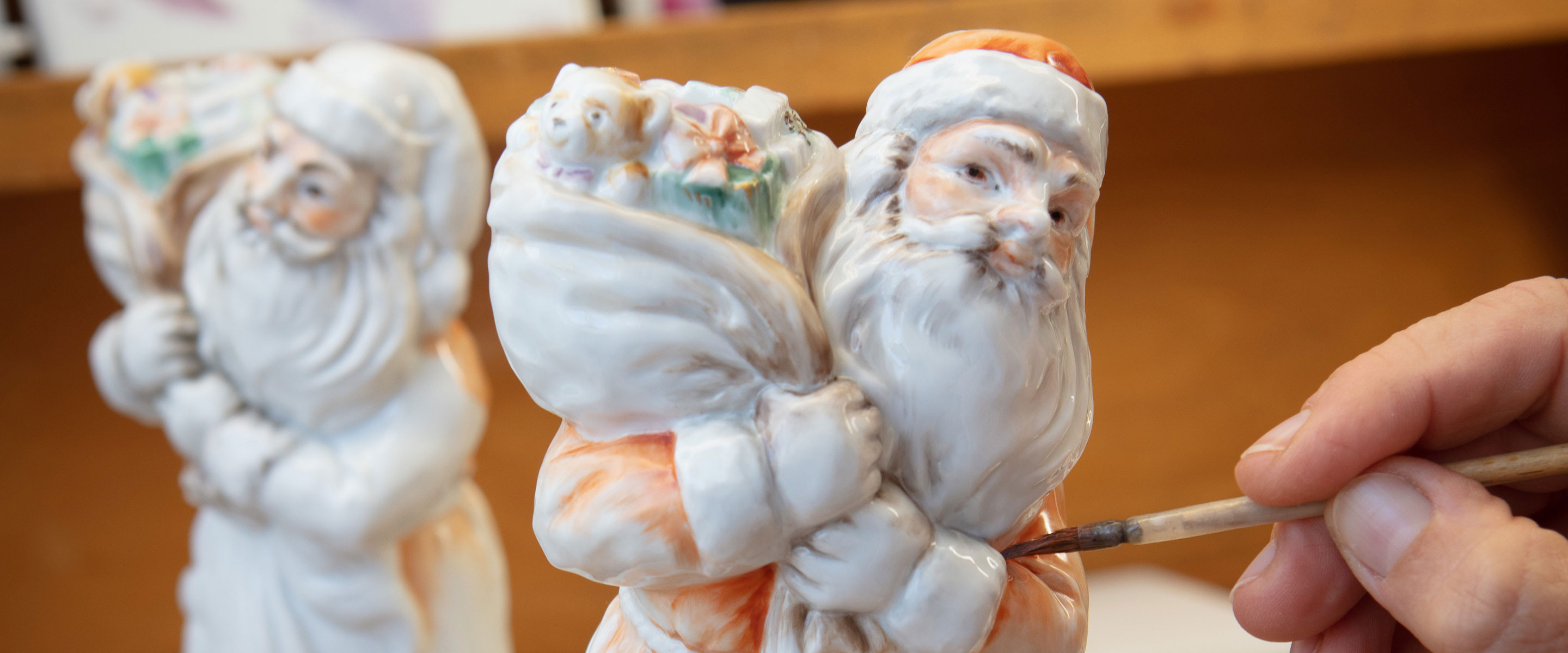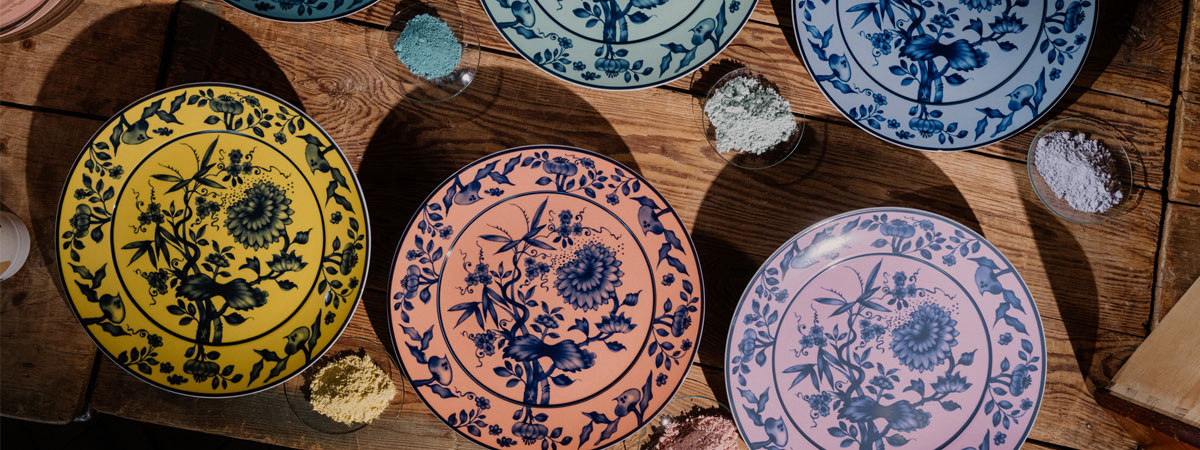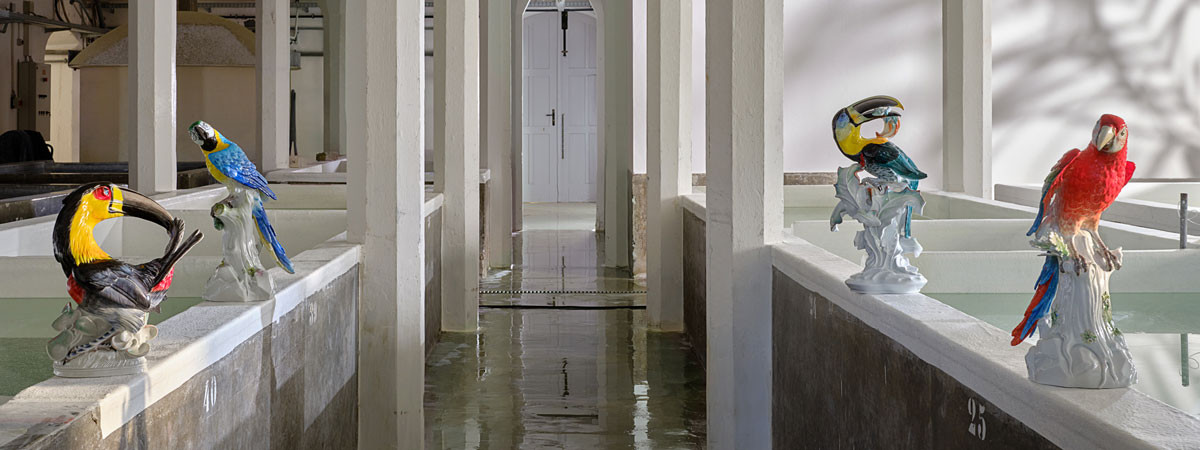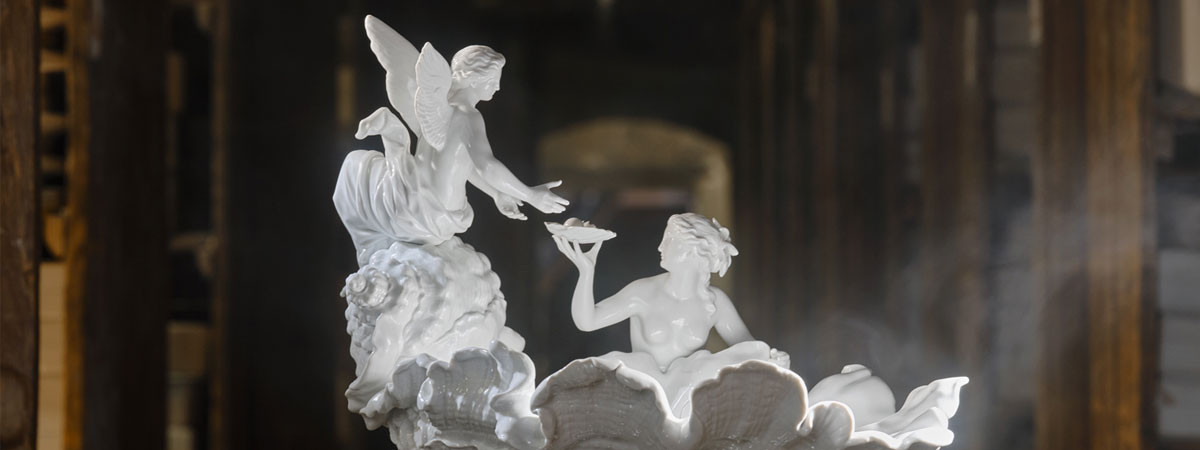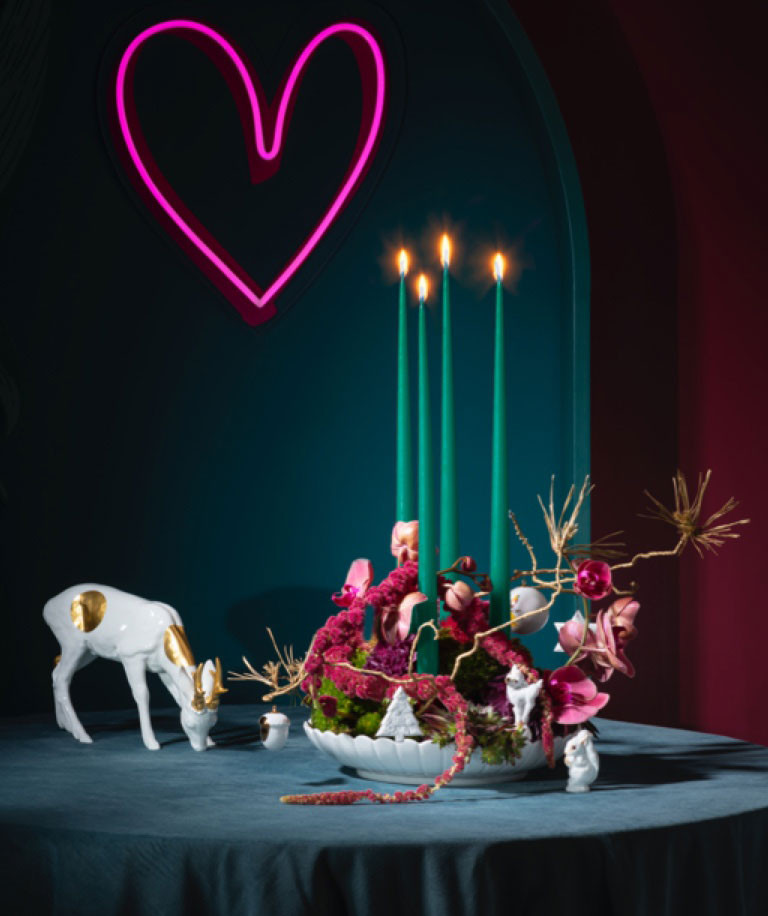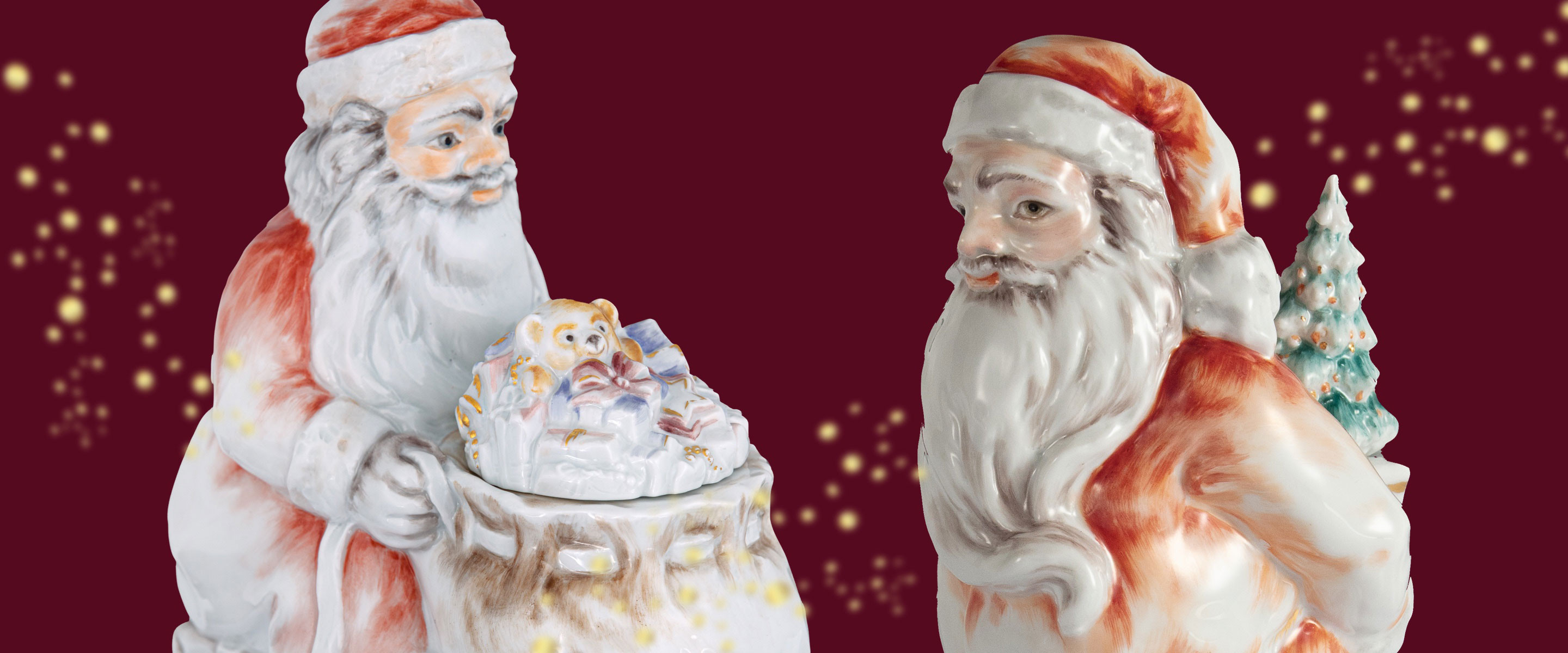
Ho, Ho, Ho, #christmaswithmeissen
-
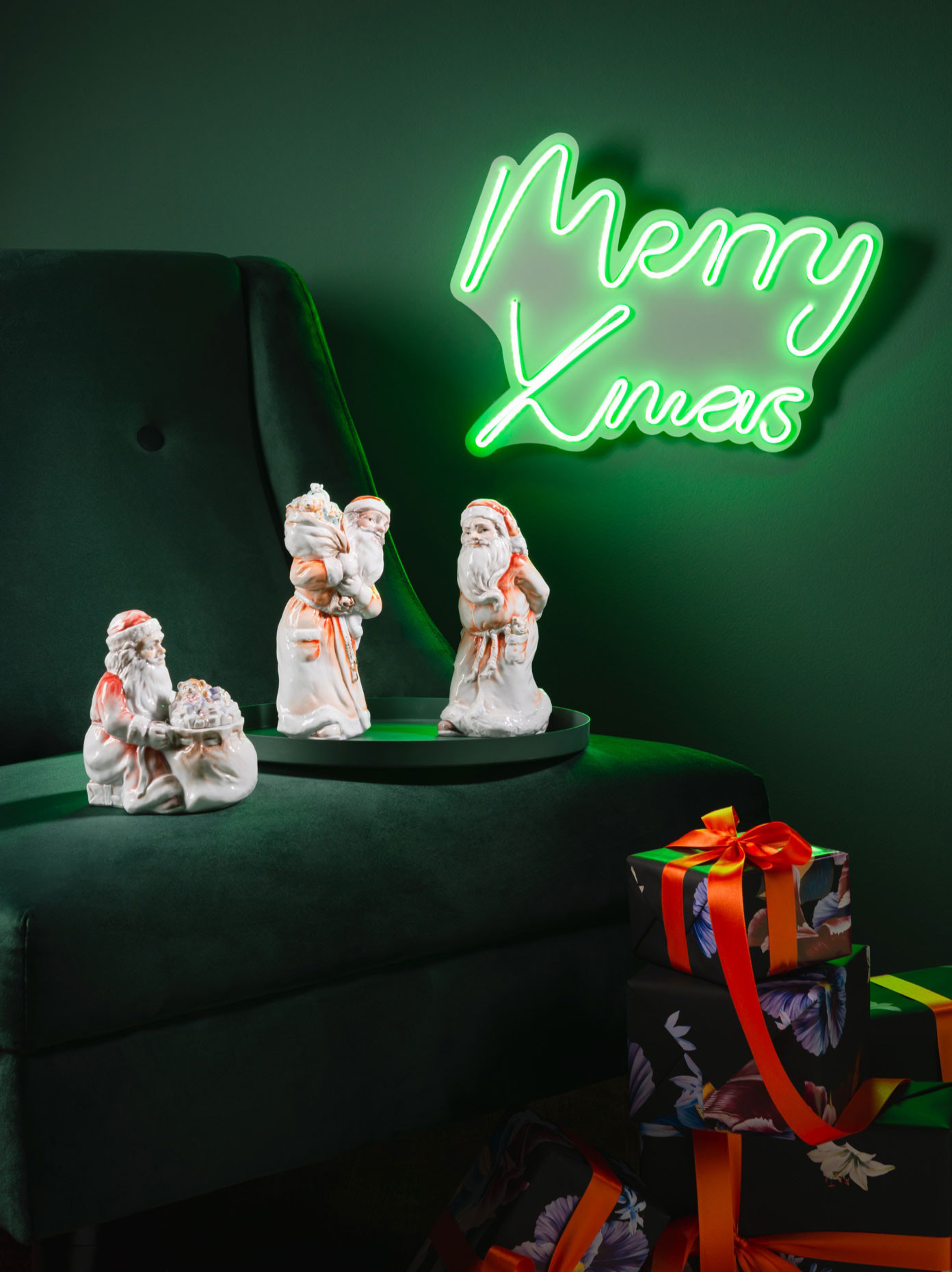 Santa Claus, Father Christmas or Sinterklaas - the chubby old man is known almost everywhere in the world. Every year, in the depths of winter, he sets out with his sleigh and reindeer to bring us lots of gifts and presents.
Santa Claus, Father Christmas or Sinterklaas - the chubby old man is known almost everywhere in the world. Every year, in the depths of winter, he sets out with his sleigh and reindeer to bring us lots of gifts and presents.
Normally, Santa Claus is not caught when secretly putting the presents for the children under the Christmas tree on the night of 24 or 25 December year after year. No one has ever seen him. Well, almost no one, because in the 19th century he must have been careless, having too many glasses of hot mulled wine. In fact, the first pictorial illustration of Santa Claus dates back to this time, drawn in 1863 by the German-American Thomas Nast for the magazine "Harper's Weekly". Since then, it has been known that Santa Claus is a kindly, elderly man with a tidy belly, a white beard and a red coat. The look of Santa Claus became world-famous in the 1930s through the advertising campaigns of the Coca-Cola Company.
"Tomorrow Santa Claus comes, comes with gifts and presents. Coloured lights, silver ornament, child with manger, sheep and bull, shaggy bear and panther animal I would like to have."
August Heinrich Hoffmann von Fallersleben, 1835
-
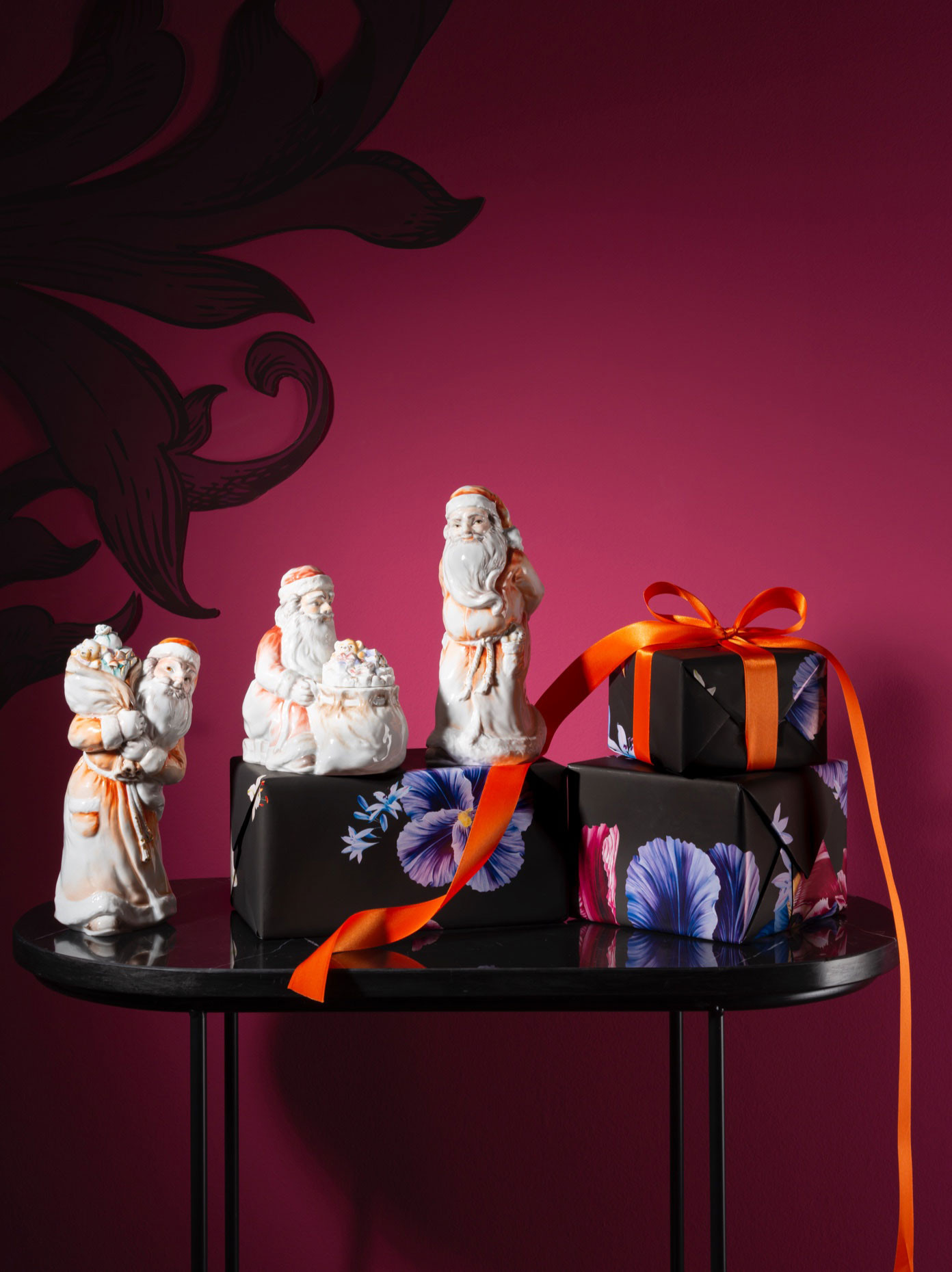
Yet the figure of Santa Claus must be one of the most charming fairy tales in the world. There is supposed to be someone who comes with a sleigh and reindeer from the region of the North Pole and puts presents for millions and millions of people under the Christmas tree at nearly the same time? That is certainly not realistic. But it's certainly a nice picture. And not only for the children who peep through the keyholes on Christmas Eve with a mixture of joy and awe to catch a glimpse of the gift-bringer. But also for those who actually no longer believe in him: Santa Claus has become a symbol of mutual gift-giving all over the world.
Scientists would probably say that Santa Claus goes back to the bishop and Saint Nicholas of Myra. As early as the Middle Ages, it was the custom to give presents to children on Saint Nicholas' day, 6 December. With Martin Luther, the day of gift-giving was finally moved to Christmas, when it is still celebrated today.
In truth, however, Santa Claus is of course much more, as all children (big and small) know! What is important is what Santa represents, not why he does it or since when. And to the delight of all children, the St. Nicholas custom has also remained with us to this day, so that since Luther we now celebrate two gift-giving festivals during the Advent season: the feast of St. Nicholas on 6 December and the great Christmas feast on 24 or 25 December.
With three different hand-painted porcelain figures, MEISSEN now celebrates and honours the red-robed bearer of gifts. The sympathetic figures by the artist Silke Ebermann were brought to life by our porcelain painters with elaborate hand painting. Delicate gold contours give the kind man a magical glow. Of course, the Christmas sack, filled to the brim with countless presents and a teddy bear, must not be missing. The highlight: individual parts of the porcelain figures can be removed and supplemented with candles or tealights, so that the Santas literally turn into your very own personal light bringers.
In a double way, the Santa Clauses decorate and embellish your home during the Advent season. They remind us of light and the essence of gift-giving - and of course also of the fact that the most beautiful gifts are to be found at MEISSEN.
... and perhaps Santa will also fulfil your heart's desire. Post your wish list on Instagram and link our account. With a bit of luck, you'll get a visit from our Santa Claus - secretly, of course. Unless the hot mulled wine tastes too good again ...
